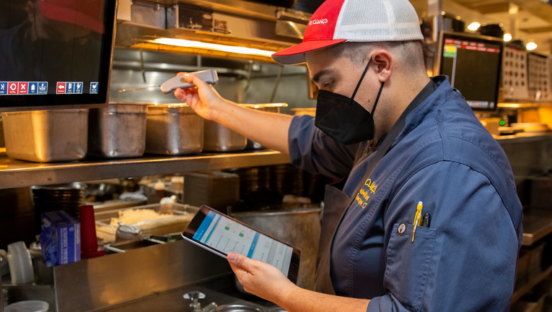The last three years have seen an explosion of changes in the world of quick service. “Agility” was one of the key words of 2021 and 2022, with restaurant operators having to be prepared to pivot on a dime alongside ever-evolving national, state, and local protocols.
As the pandemic begins to retreat into the rearview mirror, a wide range of challenges has made operating restaurants harder than ever before. Labor continues to be a pain point, with 79 percent of operators reportedly having trouble filling open positions, according to the National Restaurant Association’s “State of the Industry” report from February 2023. The same report found that 92 percent of restaurants cited food costs as a significant challenge for their business.
“For multi-location restaurant operators in particular, the triple whammy of the supply chain, staffing shortages, and higher wages has been extremely difficult to overcome,” says John Raguin, who was named CEO of Crunchtime, a restaurant operations management solution provider, in February. “What we have found is that growing a brand that is consistently profitable requires what we call ‘ops excellence.’ And ops excellence really has three major pillars to it.”
Here’s a look at those three major pillars—and how brands can master each of them.
Embrace Your DNA
Each brand has something that has differentiated it —that’s what keeps customers coming back. What goes into creating that unique identity varies, whether it’s the brand’s menu and recipes, or the specific operating procedures that help ensure customer expectations are met every time.
“When you’re trying to foster those values across your entire organization, it requires consistent training and constant communication,” Raguin says. “Field and headquarter teams also need clear visibility into the work happening at the store level so they’re sure it’s being done correctly in every location, and that brand standards are maintained.”
Deliver a Great Customer Experience
The customer experience is one that relies almost entirely on store-level team members. That’s also why it’s one of the most challenging pain points to manage from the c-suite for brands seeking “ops excellence.”
Hiring and retaining employees who are passionate about the brand they work for is key to facilitating a great brand-wide customer experience, but it’s also easier said than done. Crunchtime offers a set of solutions that can make brands an employer of choice—whether it’s the scheduling feature that allows team members to pick up or swap shifts instantly, a mobile app that guides staff through all the important tasks that need to get done on their shift, or the learning and development solution that helps employees have success from day one.
“Training so that employees are successful early on is such a huge thing,” Raguin says. “Culver’s is one of our clients and has seen great success with Cruncthime. When they started using our e-learning solution, they decreased their turnover by 25 percent.”
Manage Costs to Hit Profitability Goals
Especially with food costs skyrocketing, brands have to keep a tight grip on food and labor costs, and forecast and measure sales in real time in order to remain profitable. Crunchtime’s inventory management platform helps brands be precise in how much food they are ordering and prepping each day in order to cut back on waste and lower food costs.
Using Crunchtime’s digital inventory management system, Hickory Tavern, a sports bar and pub chain, was able to reduce extra food inventory by 25 percent and reduce its cost of goods sold by 3 percent.
“Our actual versus theoretical (AVT) analysis tool is a super important component of this conversation,” Raguin says. “Tracking and analyzing food costs across stores gives you a much better grip on what areas of your operation need to be addressed in order to become more profitable.”
For more on ops excellence, visit the Crunchtime website.














